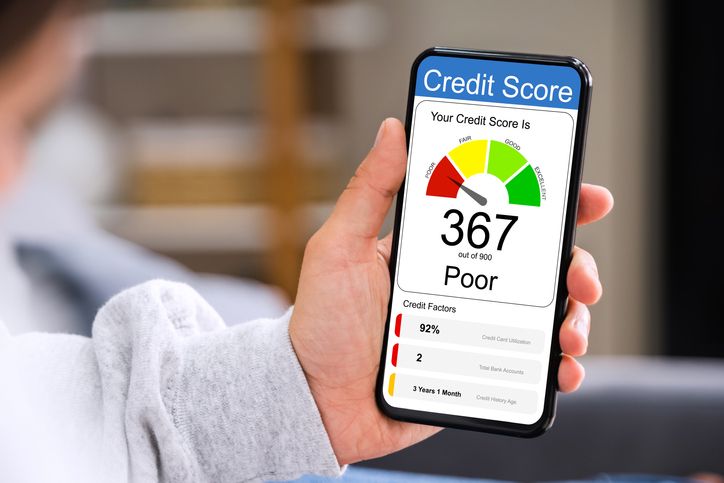Advertisement
Am I too late to start saving for my kids’ college education?

I Haven’t Started Saving and My Kids Are Almost in College. Am I …
Starting Point: Calming Initial Fears
The thought of your children being almost college age without savings set aside can definitely be a stressor. Let’s reframe this as an opportunity rather than a problem. The first thing you need to understand is that, while it helps, not every parent manages to save money in advance for their kid’s education. There are different paths you can take to handle the upcoming financial demands.
You might be feeling guilty and overwhelmed right now, but remember that it’s never too late to start. The perfect time to start saving could’ve been years ago, yes, but the second best time is right this minute. Even small amounts saved regularly will combine to create an appreciable fund.
Let’s consider a situation where you start setting aside $100 per week from today. Not a colossal amount, depending on circumstances, but here’s what would happen.
Suppose that you have five years until your child heads off to college. With a relatively moderate annual return of 5%, your weekly deposit of $100 builds to about $31k after five years.
- Starting balance: $0
- Weekly contribution: $100
- Total contributions over time: $26,000 (over five years)
- Growth from interest: Approximately $5,000 in total over the five years
- End balance: About $31,000
Navigating Financial Aid
Speaking of taking control, getting familiar with the financial aid process should be high on your priority list. Numerous resources are available to college students, including federal aid, scholarships, grants, and work-study programs. These can all help to offset the cost of higher education.
Many parents believe that they earn too much for their child to qualify for financial aid, but this isn’t always the truth. There are needs-based programs, yes, but also merit- and location-based scholarships, among others. Understanding the options available can open doors you may not have believed existed.
As part of the financial aid process, you’ll typically need to complete a FAFSA (Free Application for Federal Student Aid). This will determine your eligibility for federal and state-level assistance.
Consider an instance where after filling out the FAFSA, your child becomes eligible for student loans, work-study programs, and perhaps even grants or scholarships depending on performances and other criteria.
- Fill out the FAFSA early: it’s released each year on October 1st
- Apply every year: you need to reapply for financial aid for each academic year
- Seek out scholarships: start looking early – there are more scholarships around than you might think
- Understand Direct Subsidized Loans & Direct Unsubsidized Loans: Learn the difference as these are common federal student loans
- Learn about PLUS loans: loans your parents might be able to get if you, the student, still need help covering education costs
- Consider Work-Study: A federal program offering part-time jobs for students with financial need
Exploring Education-Specific Investment Tools
Investment tools that are specifically designed to assist with saving for college may be excellent resources. They are generally tax-advantaged, meaning that you’ll receive either tax deductions or credits for using them. The most common tools include 529 plans and Coverdell ESA.
A 529 plan is an investment account that allows you to save for college or any other post-secondary training. Your investments will grow tax-deferred, and you can withdraw the money tax-free as long as you use it for qualified education expenses.
Similarly, a Coverdell Education Savings Account (ESA) also offers tax-deferred growth and tax-free withdrawals. However, the contribution limits are significantly lower, and the funds must be used before your child turns 30.
An example could be you decide to maximize your contributions and invest $2k per year in a Coverdell ESA when your child is a senior in high school.
- When the time comes to pay for college, you would have four years’ worth of savings in the total sum of $8k
- Much needed financial boost considering zero previous savings
- The investment behaves much like a 529 plan, but with some distinct advantages
- A Coverdell lets you spend your savings on K-12 expenses, something that an ordinary 529 plan does not allow
- Your savings go toward covering costs in elementary, middle, or high schools that may be private or religious
- The account must be used by the time your child turns 30, so it has limitations, for instance, for a later-in-life return to education
Calling on Community Support
Never underestimate the power of community support. For many families, church groups, local foundations, civic organizations, and other philanthropic groups can offer substantial assistance. They might even alleviate potential financial barriers to further schooling.
This approach does include some legwork and research, but even small scholarships can help cover textbooks, supplies, and other college necessities. Also, remember: scholarships don’t necessarily have to be repaid, making them an invaluable asset in financing an education.
Let’s say you live in a small town with a civic organization that provides scholarships to qualifying high school seniors. Your child applies and actually wins a $500 scholarship.
- Here’s a one-off gift of $500, minus any applicable taxes on the award
- The funds can help cover books, supplies, lab fees, transportation, and other additional costs incurred outside of standard tuition
- Your child also gets the added bonus of resume content from being a scholarship recipient – which may assist in acquiring further scholarships or employment opportunities
- This approach does require effort and time for application, but it’s valuable in supplementing savings while enhancing personal development
- Continual attendance at local group meetings shows commitment and may increase chances of receiving ongoing support
- And additionally, community service by your child could be another criterion in many cases – again this can bring about growth and learning
Emphasizing Affordable Education Options
Just as critical as conjuring funds is considering where those funds should be used. As parents, we all want to give our kids the best start in life, including sending them to the top schools. The fact remains, however, that an expensive diploma doesn’t necessarily equate to a successful career.
Community colleges and in-state public universities are comparatively affordable options that provide quality educations. Additionally, while the college experience is often viewed as a traditional four-year stay, students increasingly take alternative routes like online courses and part-time classes.
Imagine that instead of going out-of-state for a four-year college degree costing about $100k in total, your kid opts for a two-year program at a community college followed by two years at an in-state university, ending up with the same degree and only spending $50k.
- Starting at a community college to cover general ed requirements: a significant cost saving, especially when still figuring out what you want to major in
- Choosing an in-state university afterwards saves a lot: you pay in-state tuition and have the possibility of staying at home, thus limiting living expenses
- Moreover, working part-time through school can help finance their education while they gain valuable life skills and experience
- Consider online classes which are typically more affordable. They can also be slotted around work commitments
- Remember that your child doesn’t necessarily have to rush their college education. It’s okay and sometimes more practical to choose a part-time pathway
- Above all else, make sure they’re pursuing a qualification in something they’re truly interested in: fewer drop-outs mean fewer wasted costs
Educating Your Child on Financial Literacy
With their impending journey into higher education, it’s crucial for your child to understand financial basics as well as their significance in overall well-being. Teaching them about budgeting, debt management, taxes, insurances, and responsible credit usage could be one of the most valuable gifts.
Getting your child involved in the process itself could be a significant learning opportunity. Let them help with filling out the FAFSA or applications for scholarships. Show them how you manage the family budget, and talk openly about finances.
Pretend that you sit down with your teenager and show them how to create a simple monthly budget, taking into account income and expenses.
- An initial setup includes highlighting fixed obligations such as car insurance, mobile phone plans, gym memberships, etc.
- In consultation, you consider realistic amounts for variable expenses like gas, groceries, entertainment, etc.
- You then discuss emergency savings and its importance
- You reevaluate the budget at the end of each month together to make necessary adjustments
- Over time, your teenager understands income minus expenses, where they overspend, and how to cut back
- Your teen gains valuable insight into managing finances. Over the long term, you may save a lot financially by raising a money-conscious child
Making College Affordable: A Quick Summary
Here’s a quick summary of the points discussed above.
| Strategy | Key Steps |
|---|---|
| Start Saving Now | Set up regular contributions, no matter the size |
| Make Full Use of Financial Aid | Complete the FAFSA, apply yearly, seek scholarships and grants |
| Utilize Education-Specific Investment Tools | Consider 529 plans and Coverdell ESA |
| Seek Community Support | Apply for local scholarships, join community events |
| Consider Affordable Education Options | Leverage Community Colleges, in-state Universities, online courses |
| Teach Your Child About Financial Literacy | Involve them in the process, develop their understanding of fiscal responsibility |
In Conclusion
It’s never too late to start thinking about your child’s college financing options. Even if you haven’t saved until now, several ways are still available to manage the upcoming financial obligation.
Remember, it’s not just about saving money or providing a handout but about equipping your child with financial knowledge and skills. They need to take control of their financial health too. By taking these modest steps now, you can be sure to lighten that future financial load, develop good habits, and even make college more affordable for your family.
Hide Advertisement
About
The Financial Savvy
Our goal is to help our users get their personal finances in order, live a life free of money-related stress, and to feel empowered to not only make smart choices but make the best choices with their money.
We are a leading digital reference platform for personal finance management tips and tools. From learning how to effortlessly track your cashflow and gain insights that’ll help you see easy opportunities to information on how to save and find the best deals and discounts we have you covered. Our categories include Budgeting, Job Hunting, Groceries, Credit Cards, Credit Scores, Home & Home Buying, Investing, Retirement Planning, Car Related, Medical Related and much more...
We are a leading digital reference platform for personal finance management tips and tools. From learning how to effortlessly track your cashflow and gain insights that’ll help you see easy opportunities to information on how to save and find the best deals and discounts we have you covered. Our categories include Budgeting, Job Hunting, Groceries, Credit Cards, Credit Scores, Home & Home Buying, Investing, Retirement Planning, Car Related, Medical Related and much more...












